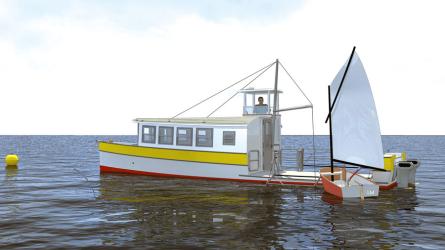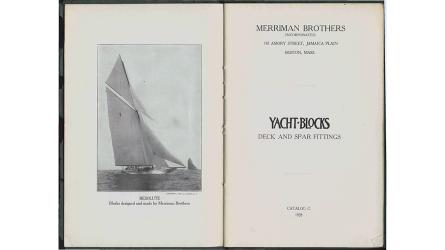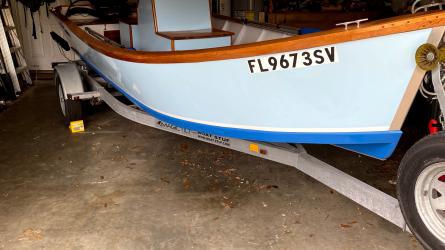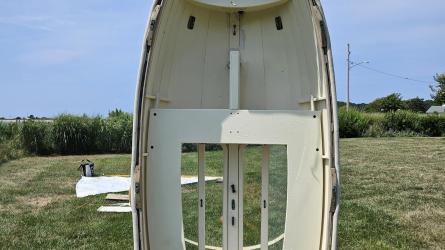March / April 2019
The Origins of the S-boat

CHEERIO, a member of the inaugural S-boat fleet, leads the pack off Marblehead. She was owned by David Percival, Jr., who, along with his brother, Lawrence, was a pioneering competitive sailor.
The Herreshoff S class, a 27' 6" one-design sloop that first sailed in 1920, is now nearly 100 years old, but it is still fiercely competitive. Few other classes of this age can make that claim. An S-boat is recognizable by its pronounced spoon bow, a displacement hull with lots of deadrise, a short and deep keel, and the typical Herreshoff pointed cabin trunk. But what makes it stand out is its sharply curved mast carrying a huge marconi mainsail and a diminutive self-tending jib.
Just who provided the initial impetus for the S class remains unclear. Paul Hammond of the Seawanhaka Corinthian Yacht Club on Long Island’s Oyster Bay has been mentioned as a prime mover, but details are vague and the claim seems to be contradicted by the fact that most of the initial 16 boats were ordered by members of the Eastern Yacht Club of Marblehead, Massachusetts; only two of those boats went to Oyster Bay. What we do know is that in October 1919 Nathanael G. Herreshoff drew a plan titled “One Design Yacht for Racing and Cruising.” The boat would measure as an “S-boat” under the then-prevalent Universal Rule, which also turned out the larger R-, Q-, and P-class racers—as well as the behemoth J-class sloops that once competed for the AMERICA’s Cup. The new S-boat was to have a deep keel and a marconi rig. In November 1919, Herreshoff carved a model to these dimensions, which differed from the plan only in its pronounced stem-profile knuckle.
It appears that Nat Herreshoff was not involved with the further development of the design. On December 14, 1919, the day the contract was signed for the first S-boat, he was busy packing for his winter vacation in Bermuda. He left four days later and, thus, a detail such as the boat’s elaborate bronze stem strap was drawn by Herreshoff Manufacturing Company’s (HMCo.) draftsman N.M. Seymour and approved by Herreshoff’s son Sidney after the elder Herreshoff had departed. We may assume that most of the S-boat’s subsequent detailing fell to Sidney, who also oversaw the construction of the first batch of boats.
On March 16, 1920, the first S-boat was given its trial in Bristol Harbor by three of America’s best-known yachtsmen: Robert W. Emmons II and George Nichols, the managers of the AMERICA’s Cup yachts RESOLUTE and VANITIE then fitting out at HMCo, as well as RESOLUTE’s legendary helmsman Charles Francis Adams III. The Boston Globe subsequently reported that the boat “sailed like a witch, and was at her best with her ‘Marconi’ rig when close hauled.”
To read the rest of this article:
Click the button below to log into your Digital Issue Access account.
No digital access? Subscribe or upgrade to a WoodenBoat Digital Subscription and finish reading this article as well as every article we have published for the past 50+ years.
ACCESS TO EXPERIENCE
2-for-1 Print & Digital Subscription Offer
For this holiday season, WoodenBoat is offering our best buy one, get one deal ever. Subscribe with a print & digital subscription for $42.95, and we’ll give you a FREE GIFT SUBSCRIPTION to share with someone special.
1 YEAR SUBSCRIPTION (6 ISSUES)
PLUS ACCESS TO MORE THAN 300 DIGITAL BACK ISSUES
PRINT+DIGITAL $42.95
Subscribe
To read articles from previous issues, you can purchase the issue at The WoodenBoat Store link below.
 Purchase this issue from
Purchase this issue from

